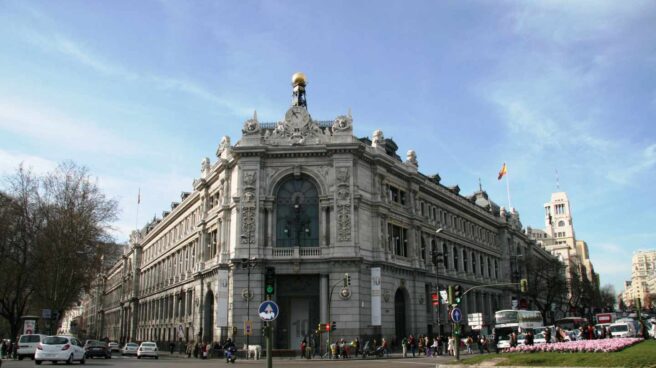

Central headquarters of the Bank of Spain in Cibeles Square in Madrid.
on his last Annual reportcorresponding to the year 2022, published in the month of May, the Bank of Spain pointed, without raising its voice, to something important and serious: that in real terms and taking into account the differences in purchasing power between Spain and the entire Economic and Monetary Union, “in recent decades, the growth … the Spanish economy was insufficient to achieve income convergence per capita Eurozone”.[1]
In 1960 GDP per capita in Spain it was 32% below the average for the group of countries currently in the euro area; in 2005, the minimum (-8.8%) of this negative gap was reached, i.e. our maximum convergence; but it rose to -13% in 2019 and to -17% in 2022. In other words, between 2005 and 2022, the negative gap in our income convergence per capita with the EMU countries, it has doubled and only in the last three years (2019-2022) has increased by 4 percentage points. The Bank of Spain understands that this is an increase in our income difference per capita with EMU can be explained evolution of employment and productivity, consistently lower than those recorded in neighboring countries.
What constantly leads us to this lower productivity and lower employment, or, in other words, what is the “structural” nature of these differences with the EMU as a whole?
productivity and employment
First, productivity. The response of the Bank of Spain is that the low productivity growth in our economy, as measured by output per hour, is due not so much to the lack of tangible capital per worker, but to intangible factors called “total factor productivity”, which includes components, that are difficult to improve in the short term or without sustainable policies over time, such as organization, training, and especially innovation. Between 1995 and 2019, the contribution of these (and other) intangible factors to value added growth was negative for our economy, but positive in France or Germany, which confirms the argument of the Bank of Spain.[2].
Second, employment, which we measure in terms of the ratio between employed and people of working age, what we call the “employment rate.” This figure in Spain is currently 4.7 percentage points lower than in the euro area as a whole; Eliminating this gap would mean, according to the calculations of the Bank of Spain, the creation of 1.3 million additional jobs in our economy. How can we explain that we cannot achieve this?
The level of employment is determined by two factors: on the one hand, the level of activity, which is the proportion of the working-age population that is willing to participate in the labor market; on the other hand, the unemployment rate, which reflects the proportion of people who, wanting to work, do not find work. Well, the report from the Bank of Spain makes it clear that of these two factors, our low employment rate is due not to low levels of economic activity, but to high unemployment rates, well above those recorded in the EMU, even in times of crisis. High Activity and Strong GDP Growth: Our employment rate “came only noticeably closer to the EMU average during 2000-2007… a period when… our country showed very vigorous but unsustainable growth… of a degree, on the accumulation of significant macroeconomic and financial imbalances”[3] So the question must be asked: why is our unemployment rate showing such resistance to falling to the EMU average?
Among the factors explaining this, the Bank of Spain highlights, first of all, the importance of “institutional structure”. This is obviously a very broad concept in which very different things fit. What is inside this “institutional structure” that is primarily responsible, according to the Bank of Spain, for our “structural” employment problem?
Arriving here Report he loses some of his commendable clarity, but we dare say not so much that we cannot understand what he is talking about. We believe this indicates a set of standards that we include under the heading Labor market regulationwhich not only explains our unemployment rate, but also our temporary employment levels, also well above the EMU average, and another feature of our economy, the rapid decline in employment as a form of adjustment to signs of economic weakness. or the start of a recession.[4]
But is that all? Probably no. Since the Bank of Spain does not refer in its Report to the impact on economic growth and employment of increased social security contributions, which, according to reliable estimates, could lead to a reduction in job creation in 2-3 years to 190,000 jobs.[5].
Conclusion: Convergence 1986-2005-2022
In short, from 1986, when we joined the EU, to 2005, there has been a 16-point progress in our GDP approach. per capita to countries that are currently members of the eurozone: our GDP per capita increased from 75% to 91%. But between 2005 and 2022 our GDP convergence per capita it has fallen from 91% to 82%, thus returning to the level reached around 1995, so we are losing ground in this race.
Luis Maria Linde. Governor of the Bank of Spain, 2012–2018
[1] Annual Report 2022paragraph 80 et seq.
[2] Same, p. 82
[3] Same, p. 93
[4] Same, p. 95
[5] IESE. The growth of social contributions. Analysis and implications for the Spanish economy. May 2023, page 26
Source: El Independiente